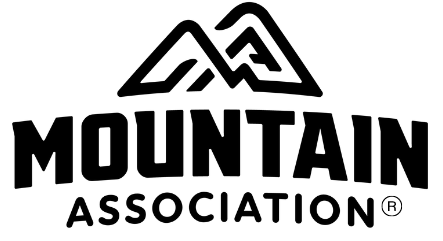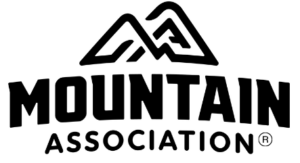Our Energy Team put together these energy savings tips for homeowners and businesses who are replacing building materials or undertaking new construction. We have also highlighted where there may be incentives under the new Inflation Reduction Act for building projects completed in 2023.
LED Lighting
- Replace all your old bulbs with energy-efficient LEDs. LEDs use about 50% less energy than fluorescent tubes, and about 90% less than screw-in incandescent bulbs. Plus, since LEDs are brighter than fluorescents, you can usually reduce the number of tubes in your fixtures (example- going from 4 bulbs down to 2), resulting in even more savings!
- If your overhead tube fixtures are in good condition, you can just replace the bulbs. While there are “plug-and-play” tubes that don’t require any rewiring, we recommend having a contractor rewire the fixtures for “ballast bypass” LEDs. This maximizes the efficiency and can make the bulbs last longer.
- For long life, we recommend choosing ENERGY STAR Certified light bulbs and/or DLC Qualified LED lighting solutions.
HVAC
- If your HVAC needs replaced, installing a more efficient unit will save you money in the long term. Efficiency ratings of Heating Seasonal Performance Factor (HSPF) apply to heat pump heating, and Seasonal Energy Efficiency Rating (SEER) apply to air conditioning. For gas furnaces, Annual Fuel Utilization Efficiency (AFUE) as a percentage measure is used. We recommend a minimum rating of 9 HSPF/16 SEER for heat pumps, 16 SEER for A/C, and 95% for gas furnaces.
- If your ductwork was damaged or destroyed, consider mini-split heat pump systems. These are highly efficient that mount indoors on a wall or ceiling. Though a higher up-front cost, there’s no ductwork and you’ll see the savings on your utility bills. We recommend a minimum rating of 12 HSPF/20 SEER for these heat pumps.
- Beginning in 2023, there will be rebates and tax credits available for installing new energy-efficient heat pumps at your home under the new Inflation Reduction Act.
Thermostats:
- Upgrade your thermostat to a programmable model, with wi-fi if possible. These make it easy to make sure you’re not heating or cooling your home or office when you’re not around. If you have heat pump heating with auxiliary electric backup, you can program your settings so that you’re not raising the temperature on the thermostat more than two degrees at a time – raising the heat too quickly can put the heat pump into auxiliary mode, which can cost three times as much and contribute to costly demand spikes if you are a commercial electric customer.
- The Department of Energy estimates a 1% savings on energy costs for each degree of setback as long as it’s kept that way for 8 hours. During cooling season, programming the thermostat at your business to go from 70 to 80 degrees at night could save you 10%!
- Programmable or wi-fi thermostats are inexpensive and found at most hardware stores. If you’re handy, you may be able to install yourself. If not, talk to your HVAC contractor.
Air Sealing
- Air sealing closes gaps and cracks around windows, doors, outlets, and baseboards. It can typically be done as a DIY project with items from your local hardware store. Anywhere you can feel a draft or see daylight is a place that needs sealing.
- Typical places needing air sealing are:
- around your windows – use caulk and weather stripping, or canned spray foam for larger gaps
- exterior doors – using weather stripping and door sweeps
- places where plumbing enters the building – use caulk or canned spray foam
- around electrical outlets on exterior walls – use caulk or canned spray foam
- Attic hatches are another place where air sealing is typically needed. This is an important area to pay attention to, but is a bigger job that may require a contractor or handyperson.
Insulation
- Good insulation both reduces your bills and increases the comfort and health of your home or business. The effectiveness of insulation is measured in R-value – the higher the number, the better. We recommend these levels of insulation for residential spaces:
- For attics: R-49, if you have duct work in your attic, consider encapsulation with spray foam. (Commercial spaces should be insulated to at least R-30.)
- For crawl spaces: R-21, if you have duct work in your crawl space, consider encapsulation (insulating the crawl wall – this is usually done with spray foam); no matter how you insulate, make sure there is a vapor barrier present.
- For walls: If your drywall is still in place, use a contractor to install dense-packed cellulose or low-expansion spray foam. Wall cavities need to be completely filled with insulation, with no gaps for air to circulate. That means that 2×6 walls need more insulation that 2X4 walls. If your walls are completely open and accessible, we recommend open cell spray foam or “flash and batt,” which is a thin layer of foam for air sealing with batt insulation filling the rest of the wall cavity.
- For basements: Insulate all rim joists to R-21. If basement is underground, you can insulate with R-21 until the basement is below ground. If the basement has aboveground sides, or significant areas that are exposed to weather, insulate those areas to R-21 as well. Be sure to monitor your basement for moisture in general, and consider sealing paints, and sump pumps as needed. Excessive moisture usually means a leaky basement, so monitoring can let you know when you need to increase sealing or insulation.
Water Heating
- Heat pump water heaters use energy in the surrounding air to heat water. They are two to three times more efficient than standard electric heaters according to the US Department of Energy. They make some noise when operating, typically much less than a heating or cooling air handler, and need to be in a space with enough volume or source of airflow. A utility room or larger storage room are good locations. Basements are often excellent locations as heat pump water heaters will remove moisture from the surrounding air when in operation.
- If you’re a homeowner, or a business that doesn’t pay a demand charge (if you’re not sure, check with us), or if you have natural gas service, you may also want to consider a tankless on-demand water heater.
- Beginning in 2023, there will be rebates and tax credits available for energy-efficient water heaters under the new Inflation Reduction Act.





